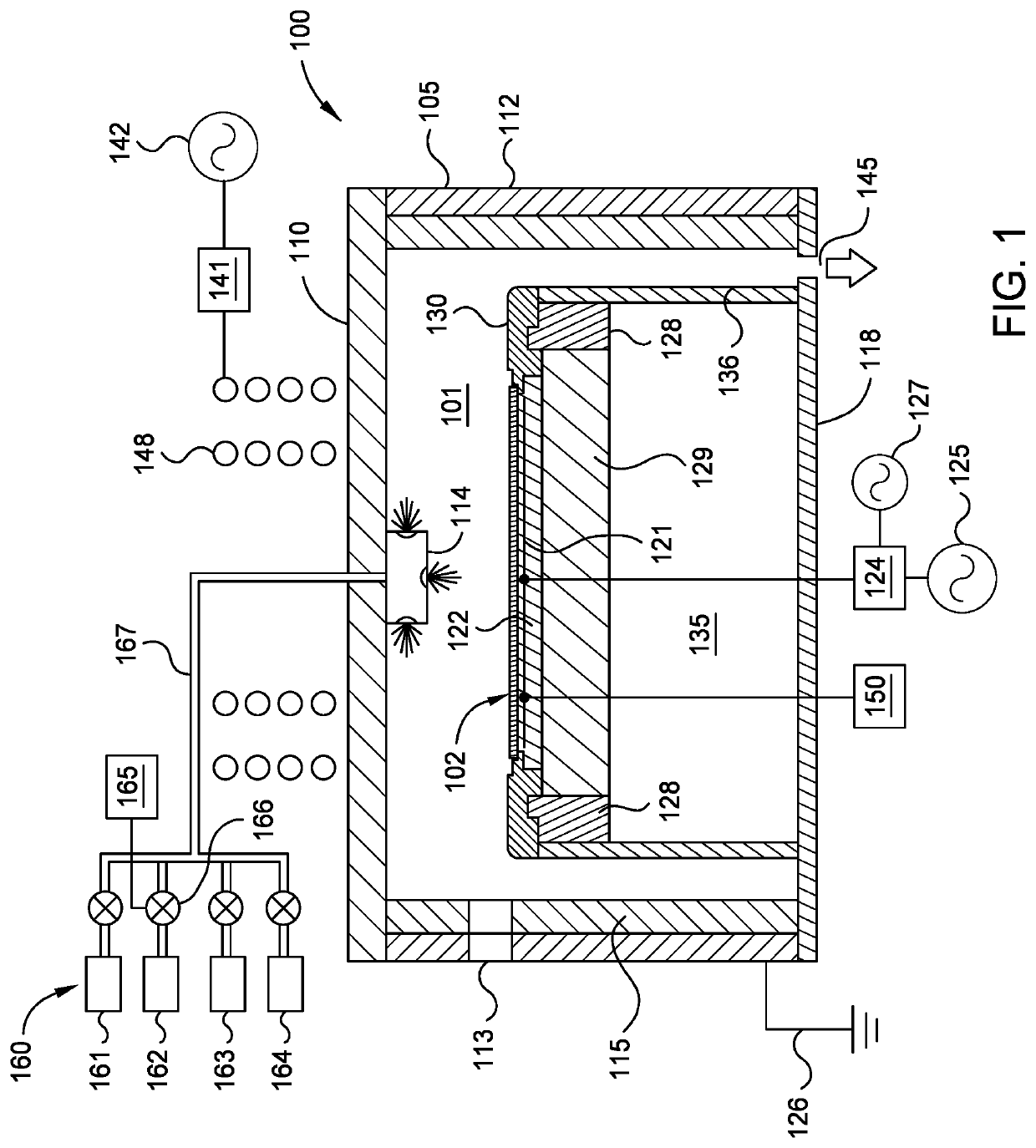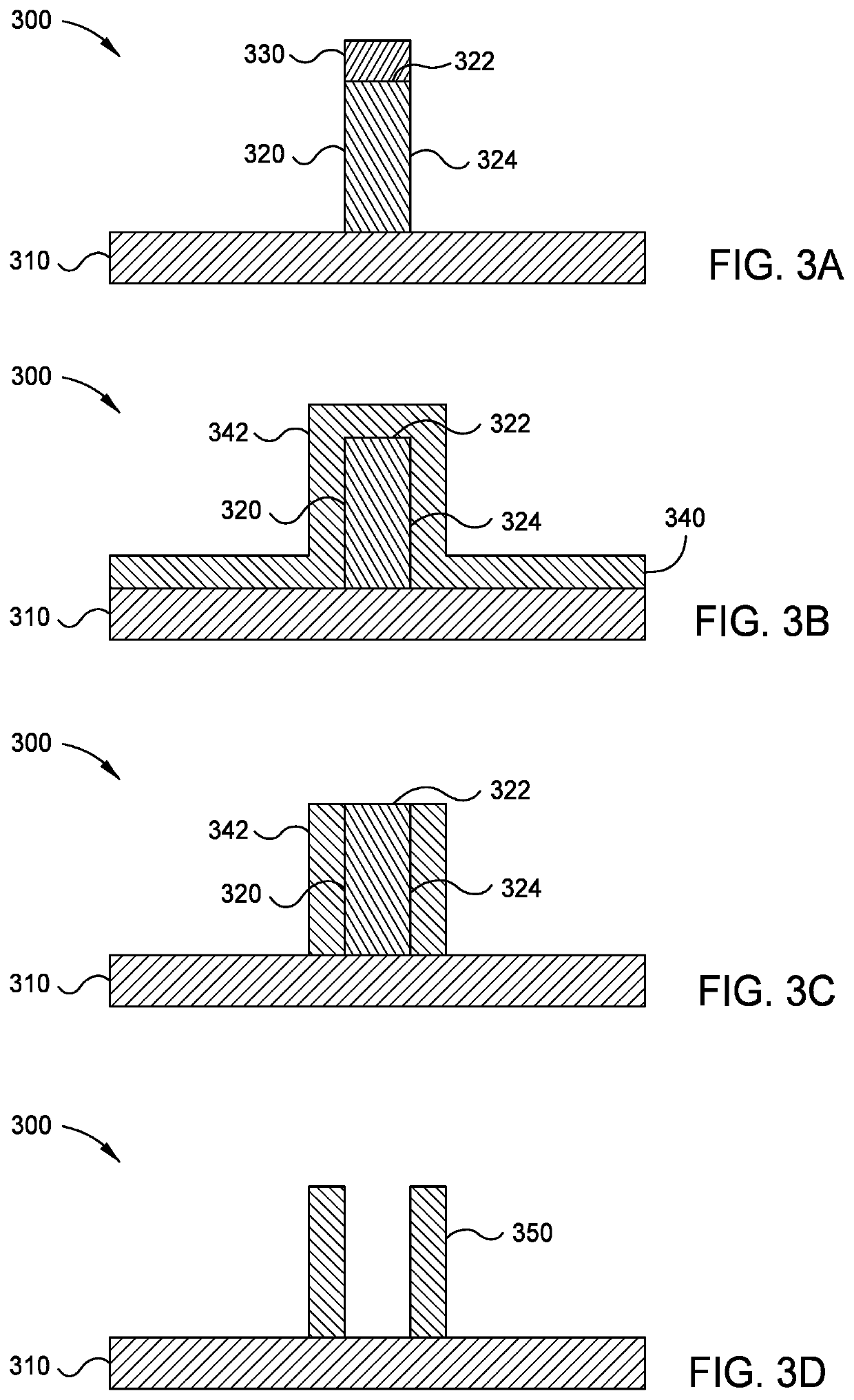Tin oxide and tin carbide materials for semiconductor patterning applications
a technology of tin carbide and semiconductor, applied in semiconductor/solid-state device manufacturing, basic electric elements, electric devices, etc., can solve the problems of high aspect ratio, high processing capacity, and high processing capacity, and achieve good profile control and high selectivity. the effect of patterning process
- Summary
- Abstract
- Description
- Claims
- Application Information
AI Technical Summary
Benefits of technology
Problems solved by technology
Method used
Image
Examples
Embodiment Construction
[0024]The following disclosure describes formation of high aspect ratio features. Certain details are set forth in the following description and in FIGS. 1-7D to provide a thorough understanding of various implementations of the disclosure. Other details describing well-known structures and systems often associated with formation of high aspect ratio features are not set forth in the following disclosure to avoid unnecessarily obscuring the description of the various implementations. In addition, the apparatus description described herein is illustrative and should not be construed or interpreted as limiting the scope of the implementations described herein.
[0025]Many of the details, operations, dimensions, angles and other features shown in the Figures are merely illustrative of particular implementations. Accordingly, other implementations can have other details, components, dimensions, angles and features without departing from the spirit or scope of the present disclosure. In ad...
PUM
| Property | Measurement | Unit |
|---|---|---|
| width | aaaaa | aaaaa |
| width | aaaaa | aaaaa |
| width | aaaaa | aaaaa |
Abstract
Description
Claims
Application Information
 Login to View More
Login to View More - R&D
- Intellectual Property
- Life Sciences
- Materials
- Tech Scout
- Unparalleled Data Quality
- Higher Quality Content
- 60% Fewer Hallucinations
Browse by: Latest US Patents, China's latest patents, Technical Efficacy Thesaurus, Application Domain, Technology Topic, Popular Technical Reports.
© 2025 PatSnap. All rights reserved.Legal|Privacy policy|Modern Slavery Act Transparency Statement|Sitemap|About US| Contact US: help@patsnap.com



